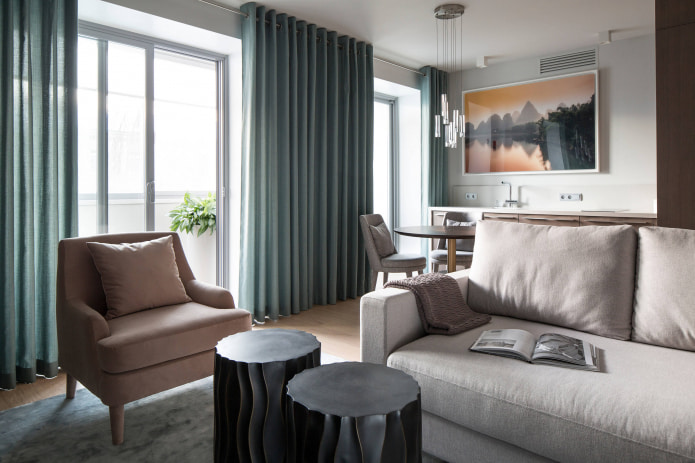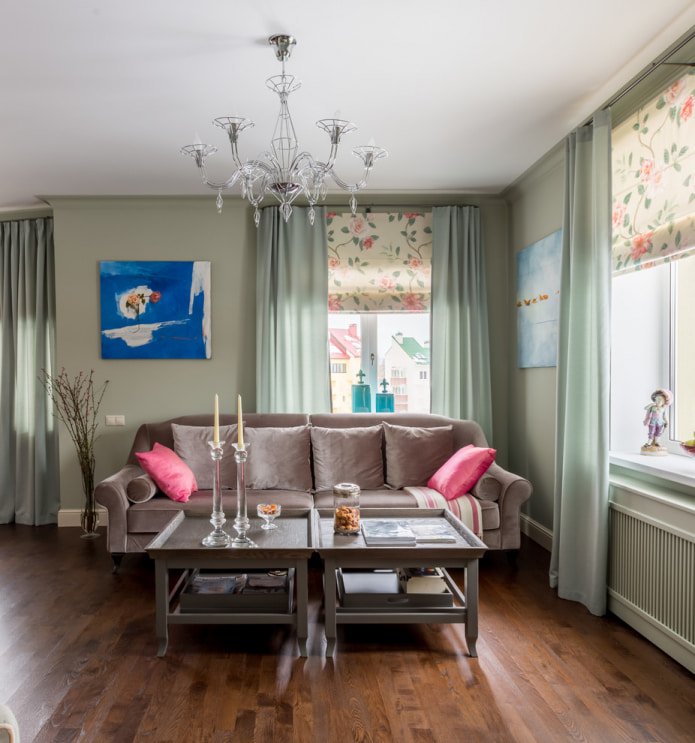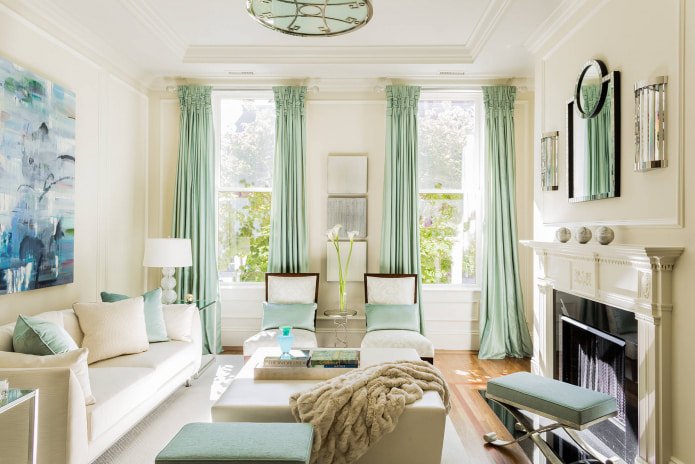Features of choice
When choosing curtains for a room, it is worth considering some factors that may prove significant in the future.
- Fabric color. Dark green curtains can visually conceal the space of the room, so for small rooms it is better to choose light and neutral shades.
- Material density. For bright, well-lit rooms, dense fabrics are suitable, such as blackout, which can isolate from external light.
- Style. Curtains, like other interior items, should support a single design idea.
- Material. The composition of the fabric also affects the overall picture, for example, linen or tulle are suitable for the kitchen, which cannot be said about curtains made of velvet or satin.
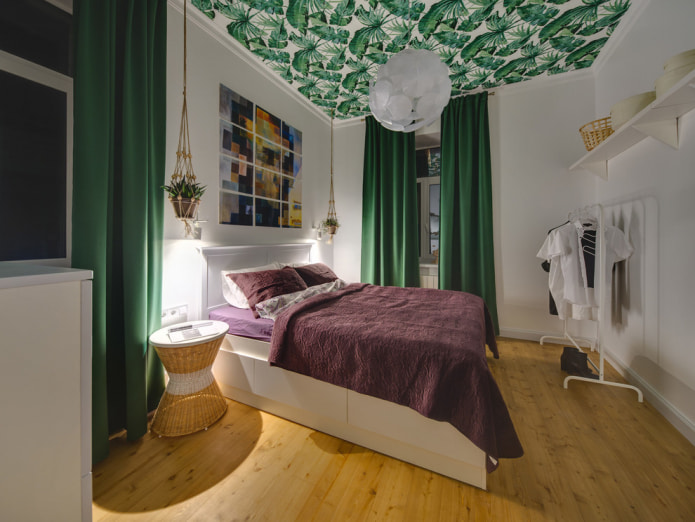
The photo shows green curtains in the interior of a teenager’s bedroom.
Types of curtains
Curtains in the interior of an apartment can perform their main task and protect from the sun and prying eyes or “serve” more as a decoration in the house.
Thread
Green curtains made of threads have more of a decorative function, in this way you can divide or decorate the space of an apartment. Thread curtains are decorated with glass beads, beads, chains and other elements.
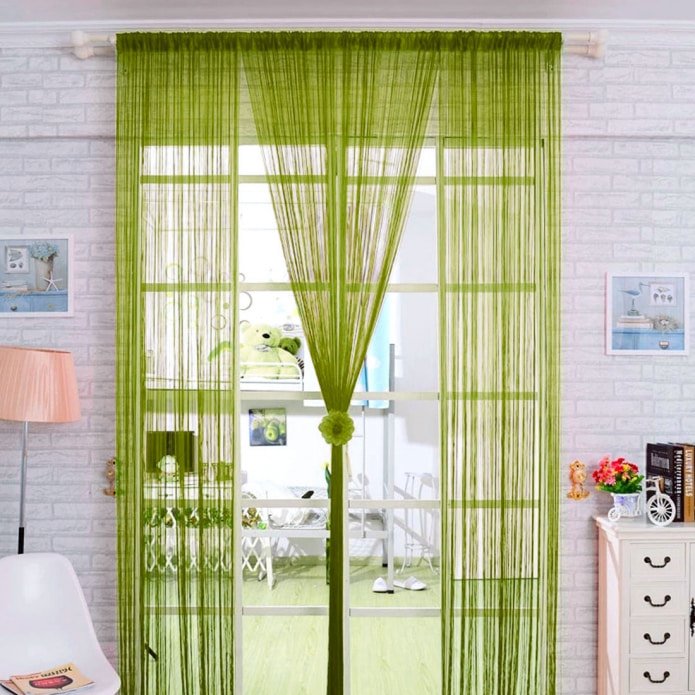
Roman
The mechanism of Roman blinds involves horizontal lifting due to spokes inserted across the curtain and a chain threaded through each segment and secured at the end. When the chain is raised, the fabric folds into even folds. Roman blinds can be made of any fabric, even bamboo.
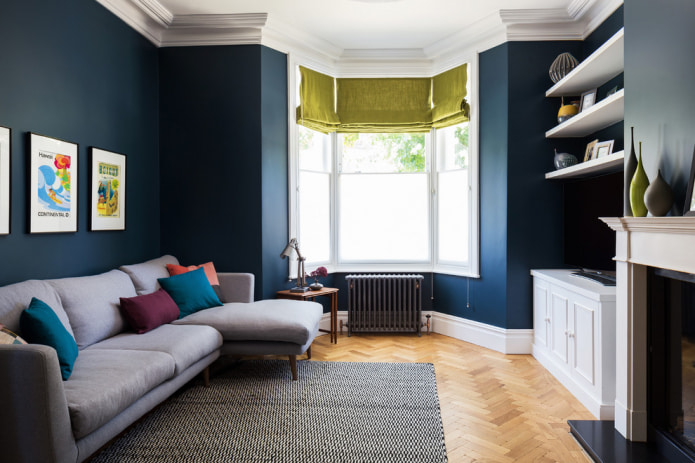
The photo shows olive roman blinds on a bay window.
Roller
Roller blinds have a simple mechanism, the main part of which is a cylindrical tube, onto which the fabric is wound. The rise is regulated by a chain attached to the base. The model is minimalistic and can be attached to the window itself.
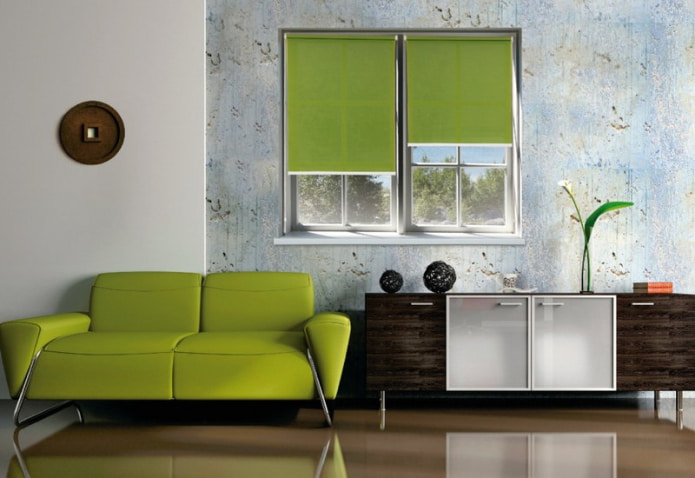
Curtains (tulle, organza, etc.)
The most common type of curtains. Goes well with thick curtains. Transparent flowing fabric is suitable for a simple floor-length cut and for an unusual multi-layered design.
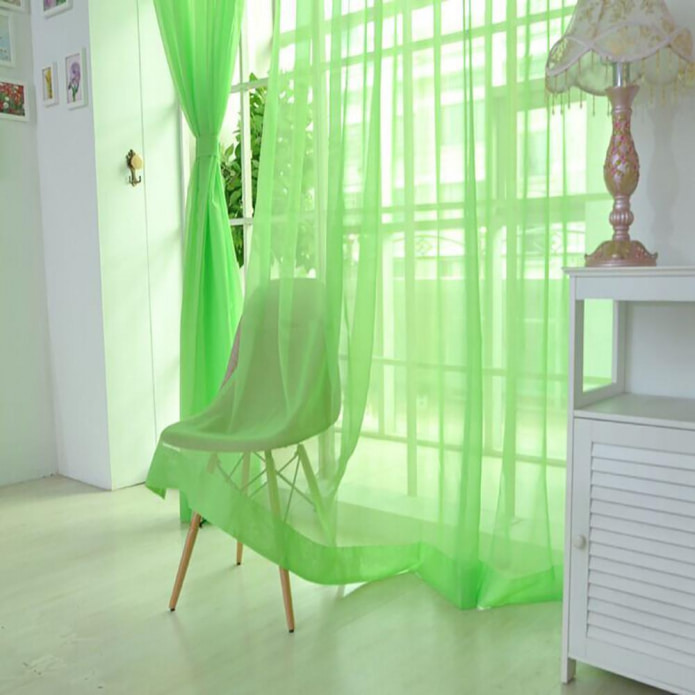
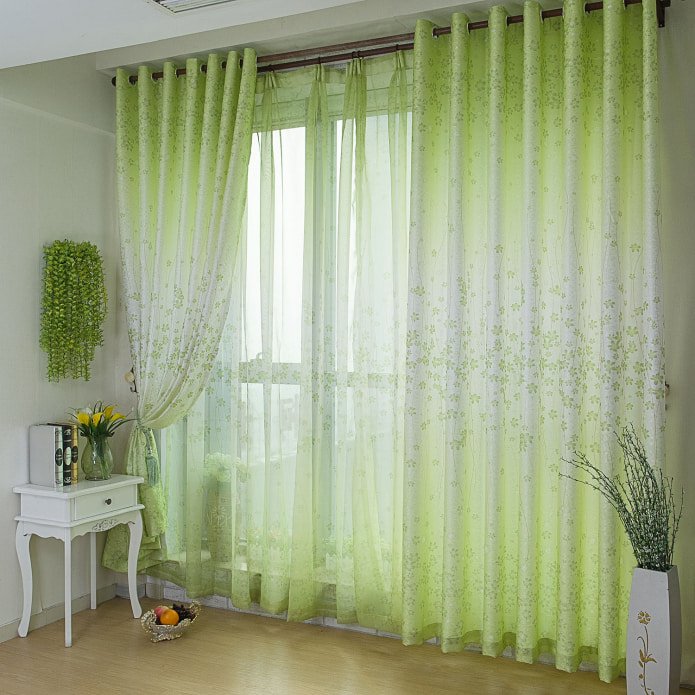
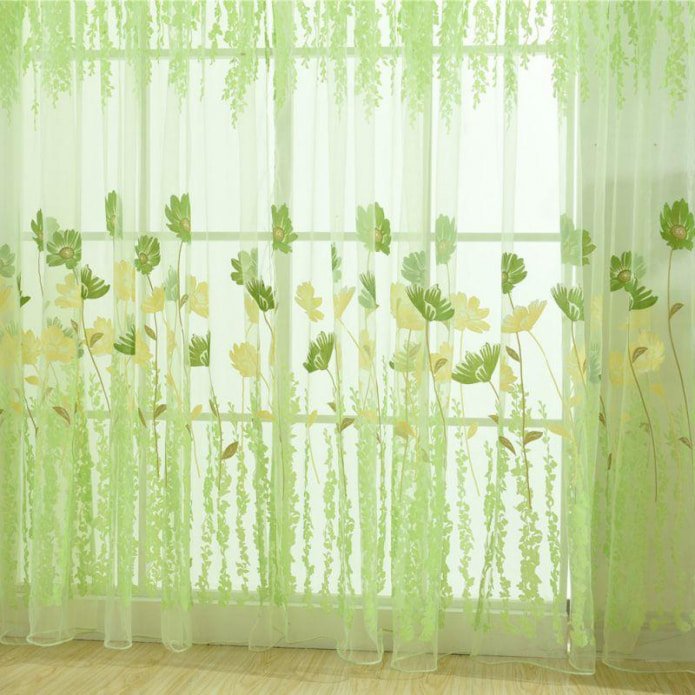
Blinds
Horizontal or vertical blinds will decorate a modern apartment design. The plates fastened together can be adjusted, completely blocking the light from entering the room or leaving a gap between them.
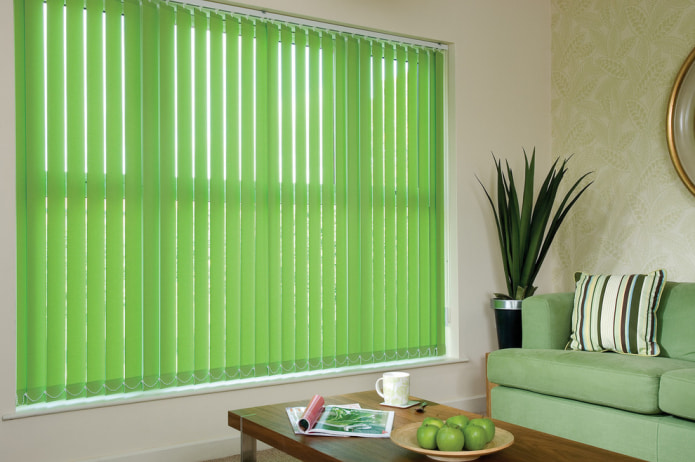
Photo curtains
Photo printing is applied to curtains of any density. Photo curtains will be an interesting addition to the design or its bright accent.
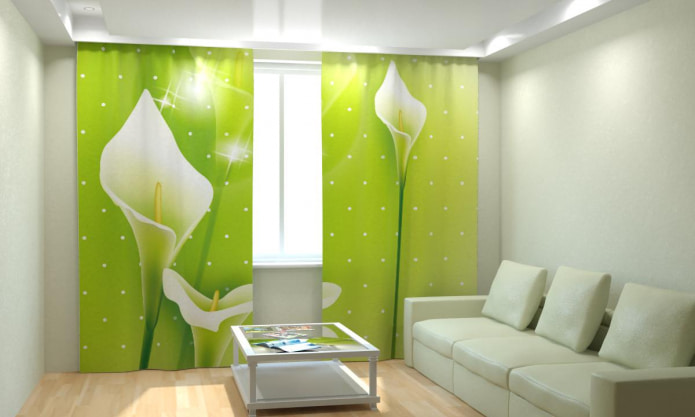
Double curtains
Most often created from curtain fabrics. Materials and colors must necessarily be in harmony with each other, having a common shade, pattern or decor.
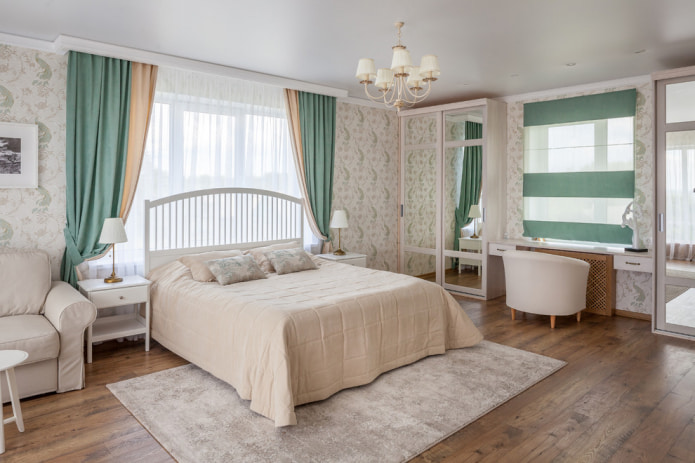
Curtain sizes
Curtain length is another criterion that gives more choice for creating the perfect design for yourself.
Short
Short curtain models can frame the windows of a loggia or kitchen, and are quite successfully combined with long curtains.
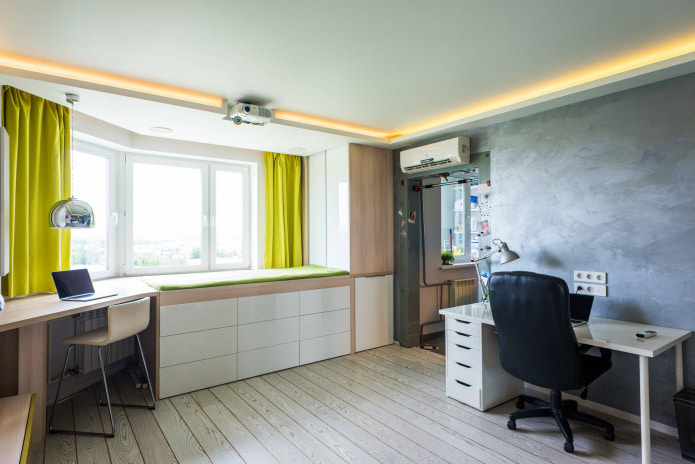
Long
A more classic option, long curtains are used to decorate the bedroom, living room and even kitchens. They can be combined with different models of short curtains or different materials, such as tulle and jacquard.
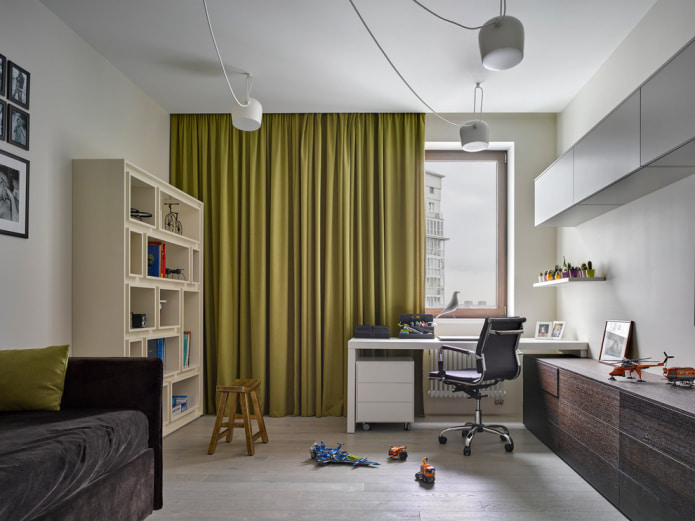
The photo shows floor-length curtains in a child’s room. A pillow and curtains of the same color complement each other harmoniously.
Curtain material
The range of fabrics is quite wide, some let in sunlight, while others can completely block it.
Fabrics for curtains
Curtains include dense fabrics that protect from light. Often combined with light transparent curtains.
Blackout
Dense and impenetrable two-layer material. Blackout curtains, even white or cream-colored, completely isolate the room from outside light. It consists of black polyester threads and an outer decorative layer.
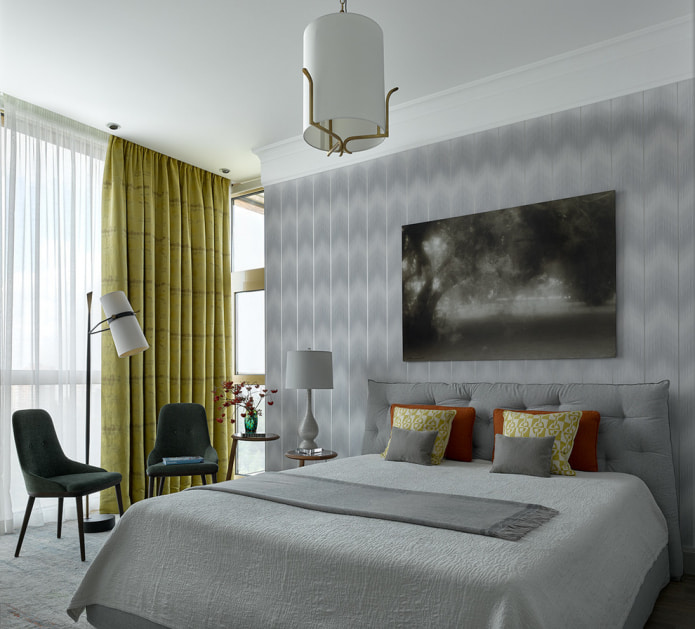
Linen
Natural linen remains relevant and is often used in modern design. The fabric is quite coarse and has a large weave, so it is more suitable for a simple cut.
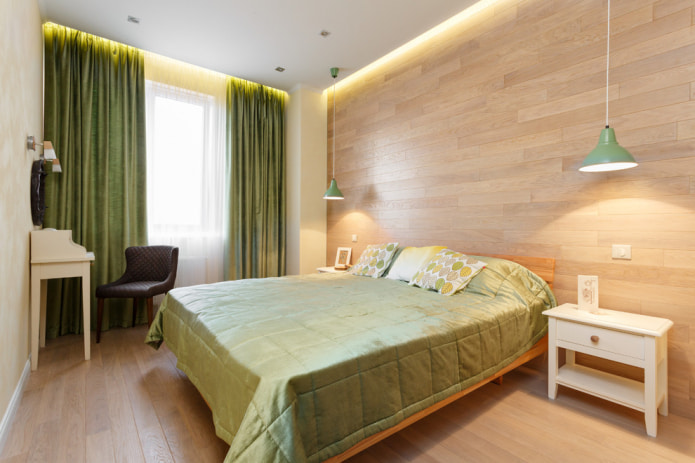
The photo shows linen curtains in the color of the bedspread in an eco-style.
Velvet
Velvet is a spectacular, pleasant to the touch material. It looks beautiful in the evening light, the soft fleecy surface forms iridescence in the folds. Velvet fabric can be divided into several subgroups: corduroy, velvet-devore, ponvelvet, velor. All types have different appearances, but they are united by a soft surface.
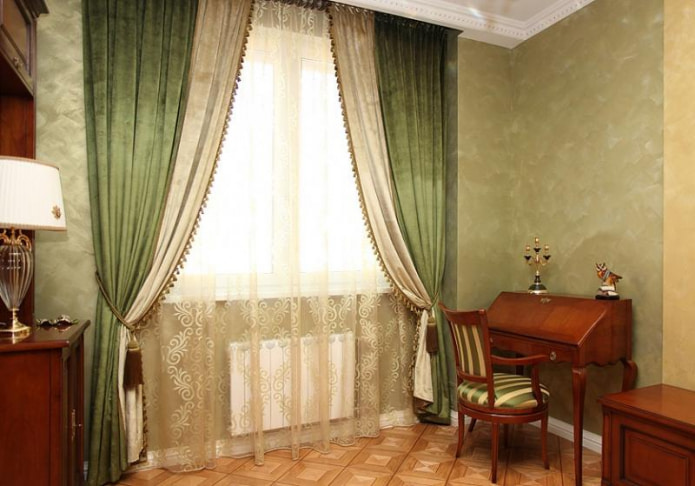
Satin
The complete opposite of velvet, satin material is smooth and shiny on the outside, and matte on the inside. It can be made of both natural silk threads and synthetics.
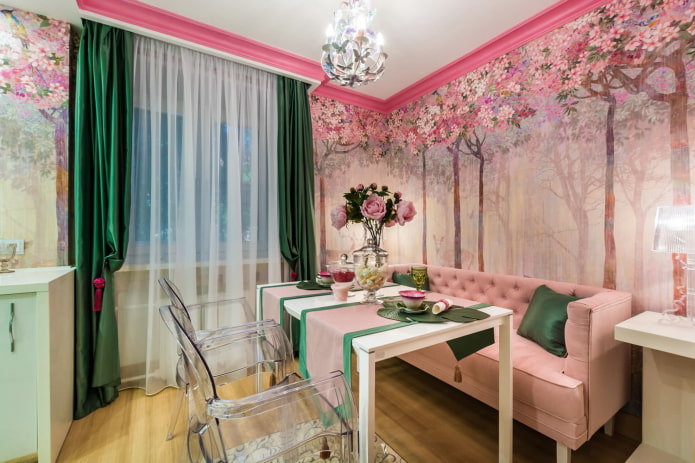
In the photo, curtains made of satin fabric stylishly fit into the delicate interior of the kitchen.
Jacquard
Dense curtain fabric with a beautiful pattern. The composition of jacquard can be different: completely natural, synthetic or with mixed threads. Jacquard fabric is characterized not by the composition of the material itself, but by the weaving method.
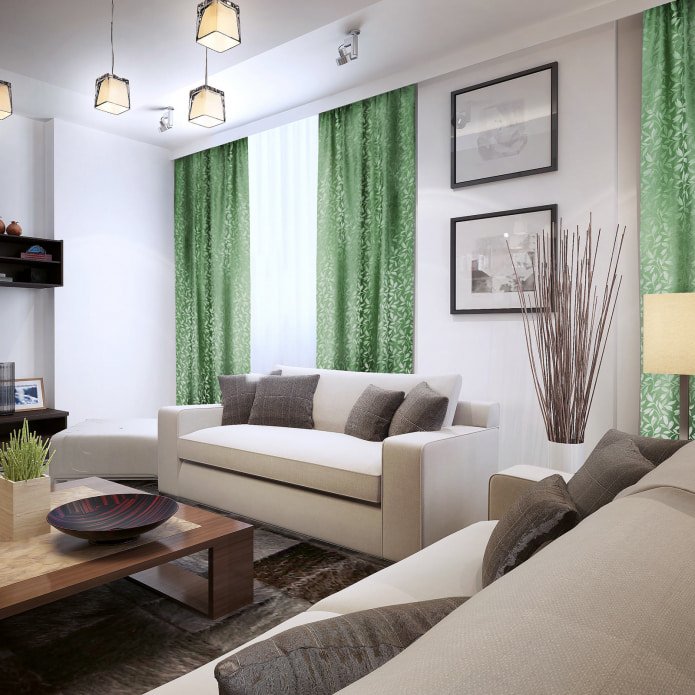
Rogozhka
The main distinctive feature of rogozhka is the weaving method of the threads, they form a unique pattern. Rogozhka mainly contains natural materials such as cotton, linen, and silk. But synthetic threads can also be added.
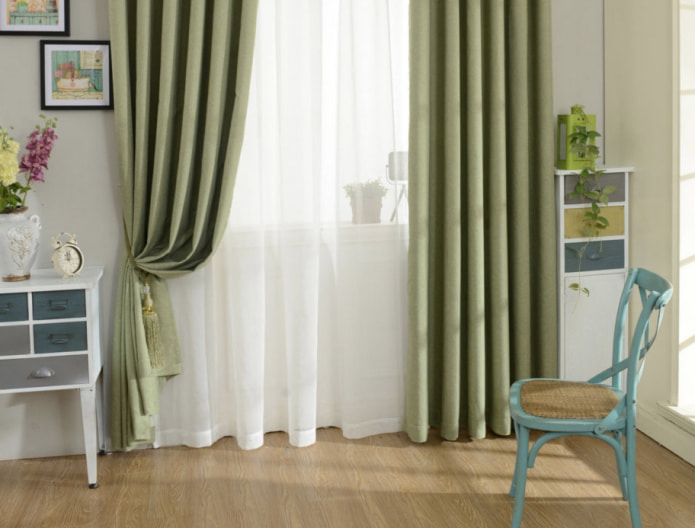
Taffeta
The fabric is dense and quite rigid, this effect is achieved by tightly twisting the threads. It is made from both natural and synthetic threads. The fabric has a slight sheen.
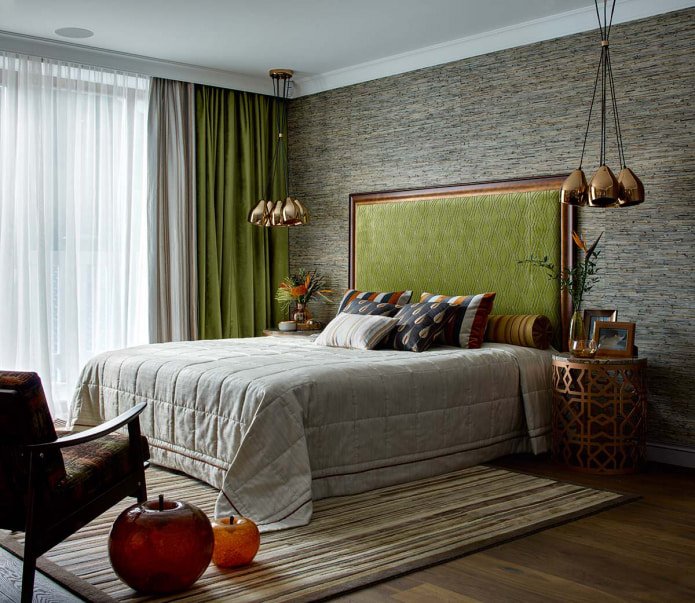
Fabrics for curtains (tulle)
Tulle curtains are transparent lightweight fabrics.
Veil
A pliable matte translucent fabric with a smooth surface. Veil is suitable for complex compositions, as it easily takes any shape. Mainly made of cotton.
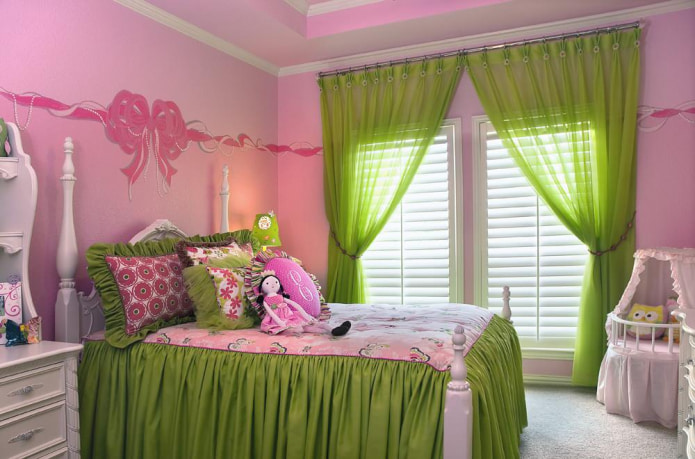
Organza
The production of the material is similar to taffeta. For organza, the threads are also twisted together. The result is a stiff, but beautiful fabric. Different materials are used in production, natural and artificial. The fabric has a beautiful shine and interesting shimmer.
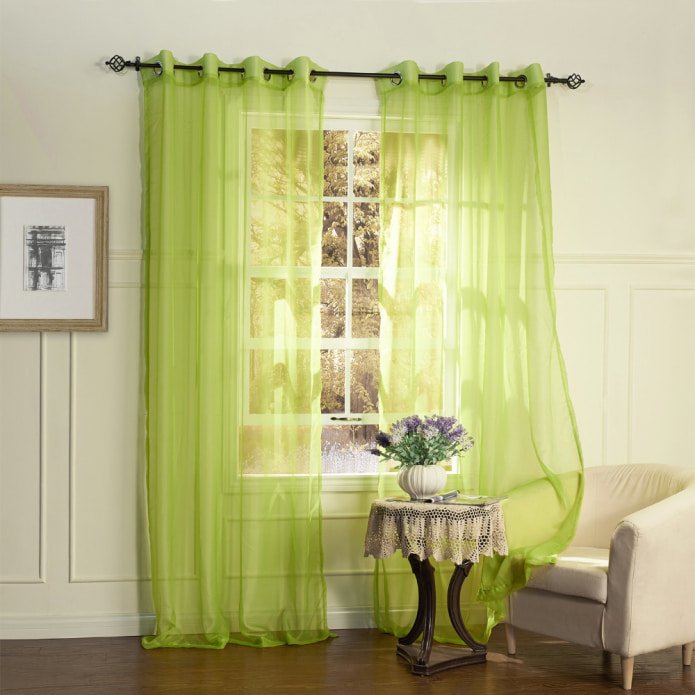
Kiseya
Kiseya thread curtains are suitable for decorating an interior, dividing space and as an addition to the main curtains. Kisei is often complemented with decorative elements.
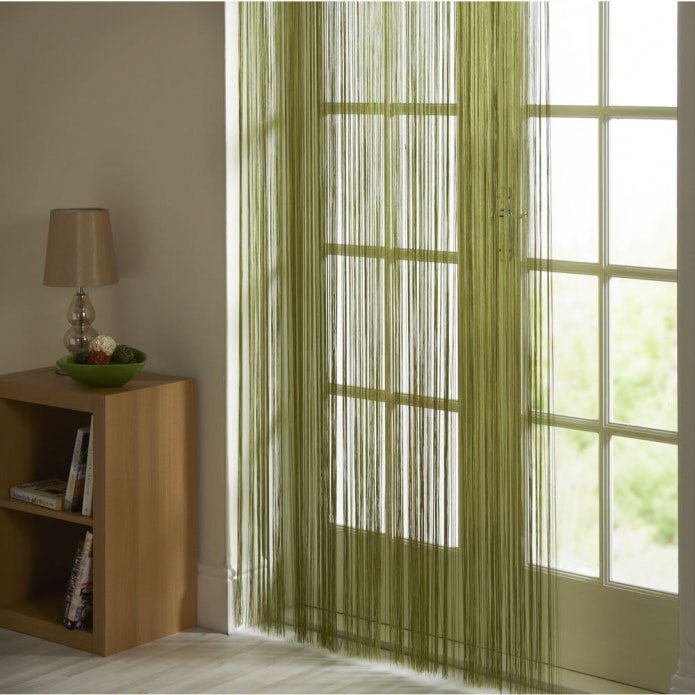
Types of fastening to the cornice
Different fastening options not only allow you to choose the most convenient option, but can become another “highlight” in the design.
Eyelets
A simple and elegant way to attach curtains to the cornice. Holes are cut along the top of the curtain and secured with metal rings. The curtains are strung on a rod, resulting in equal folds on the fabric.
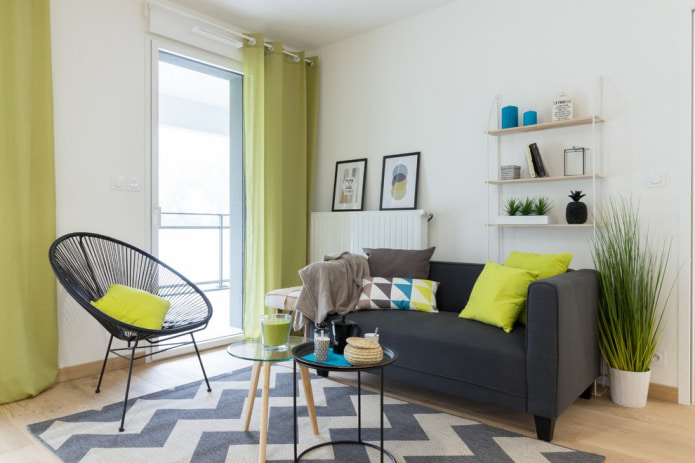
The photo shows light green curtains on eyelets in the living room.
Velcro
A convenient method of fastening. Velcro can be sewn in as a tape and attached to the curtain rod or fix individual loops that are strung on the rod.
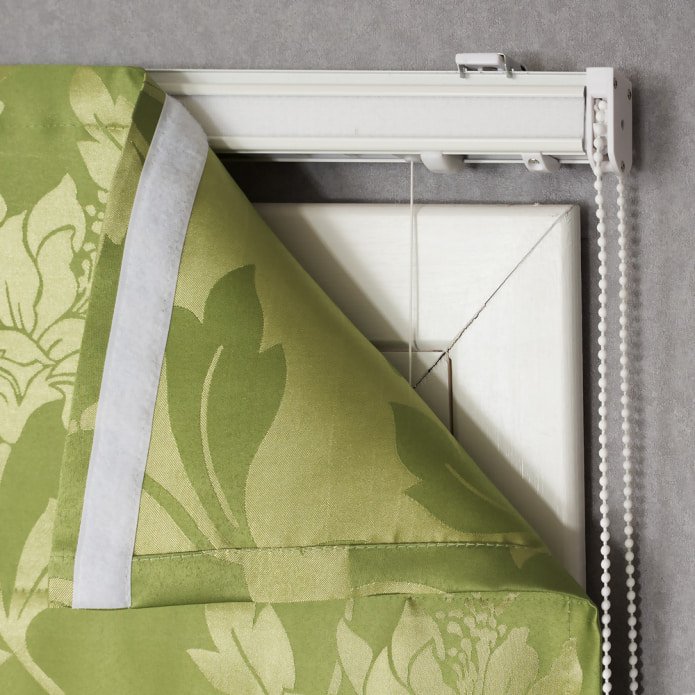
Loops
A minimalist but effective method of fastening. Loops are usually made of the same fabric as the curtains. The curtains are easy to put on and take off from the rod.

Drawstrings
Curtains with drawstrings do not require additional fastening, a tunnel is created in the fabric, which is put on the rod. This type of fastening is distinguished by its noiselessness.
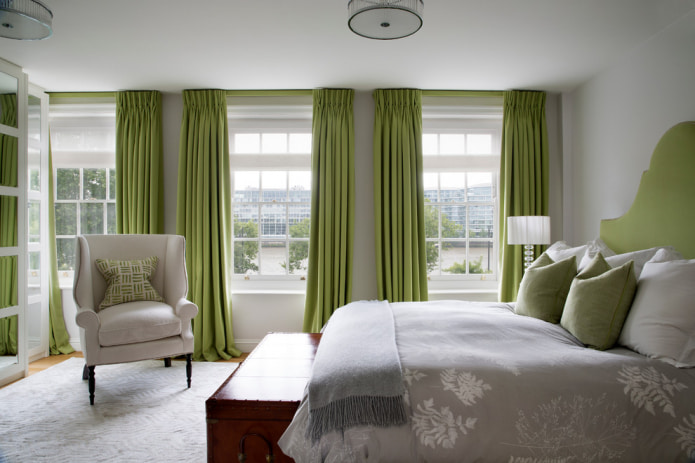
Tape
The tape is sewn onto the back side of the curtain, and a fine drapery is created on the front side. The fabric is attached to the cornice with hooks. The most commonly used type of fastening.
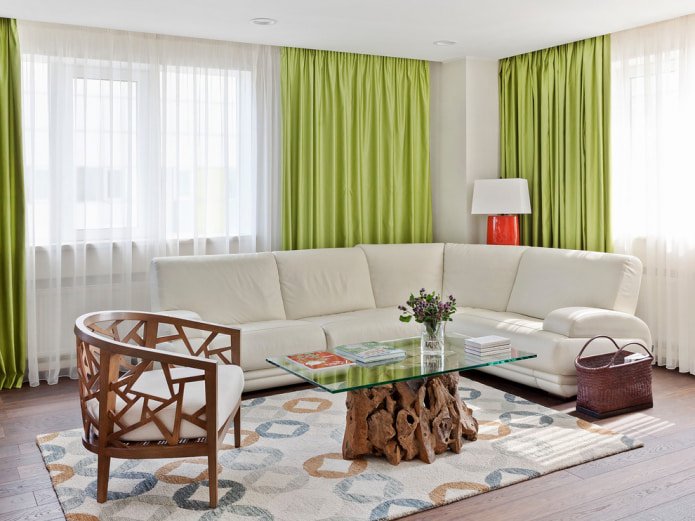
Rings
Another beautiful method of fastening. Hooks are fixed to the rings, which are made of metal, wood or plastic. A curtain with tape is put on them. The rings are strung on a cylindrical curtain rod, which is often decorated with different attachments along the edges.
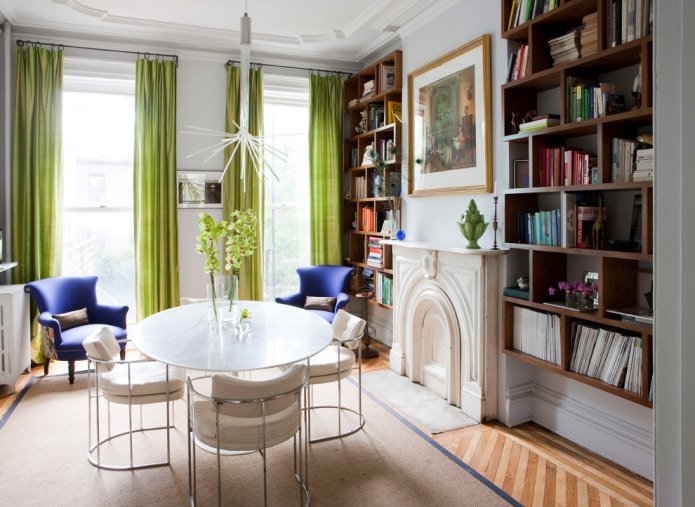
Shades of green
Green has a wide palette, from the lightest to deep and rich tones.
Dark green
A beautiful green shade similar to pine needles. The color is dark, but quite rich, a good choice for an accent tone.
Dark green will look especially beautiful on long curtains: straight to the floor or vertical blinds.
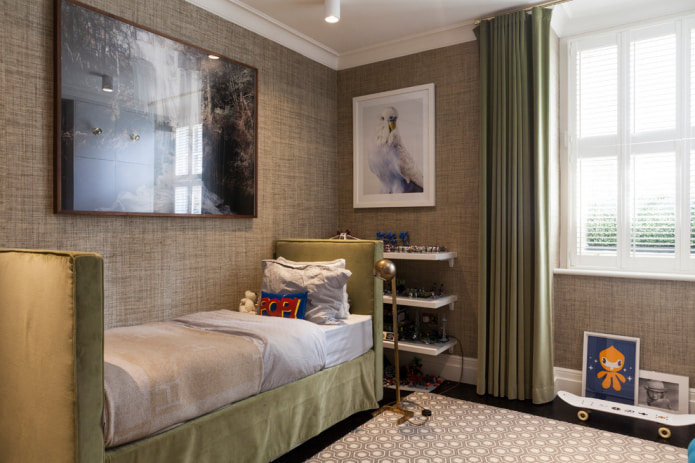
Light green
A fresh and bright shade of green. The color radiates positivity and is perfect for rooms with frequent use.
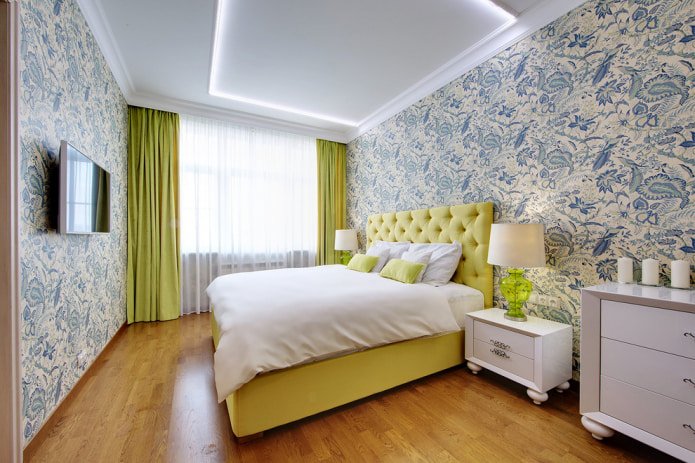
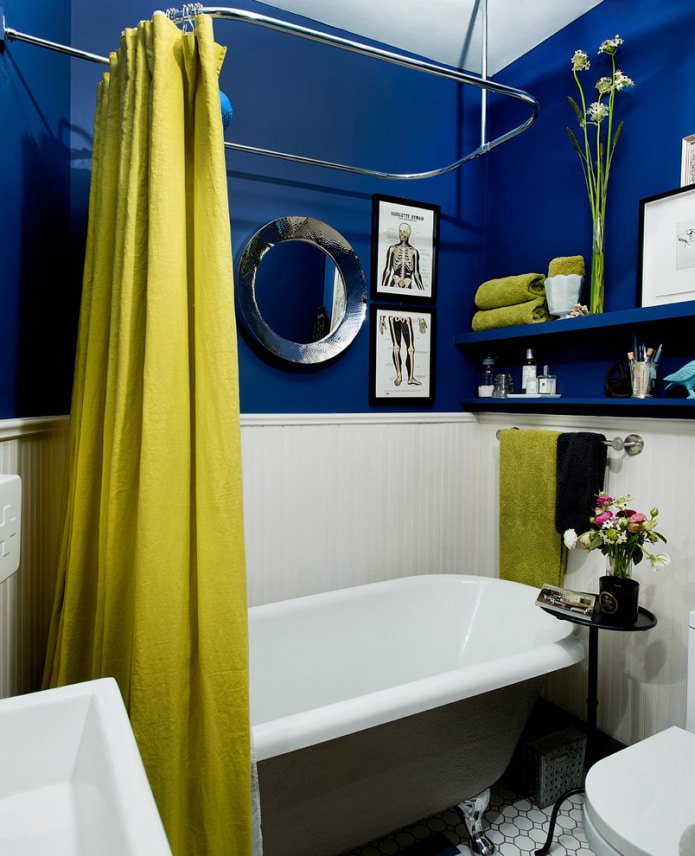
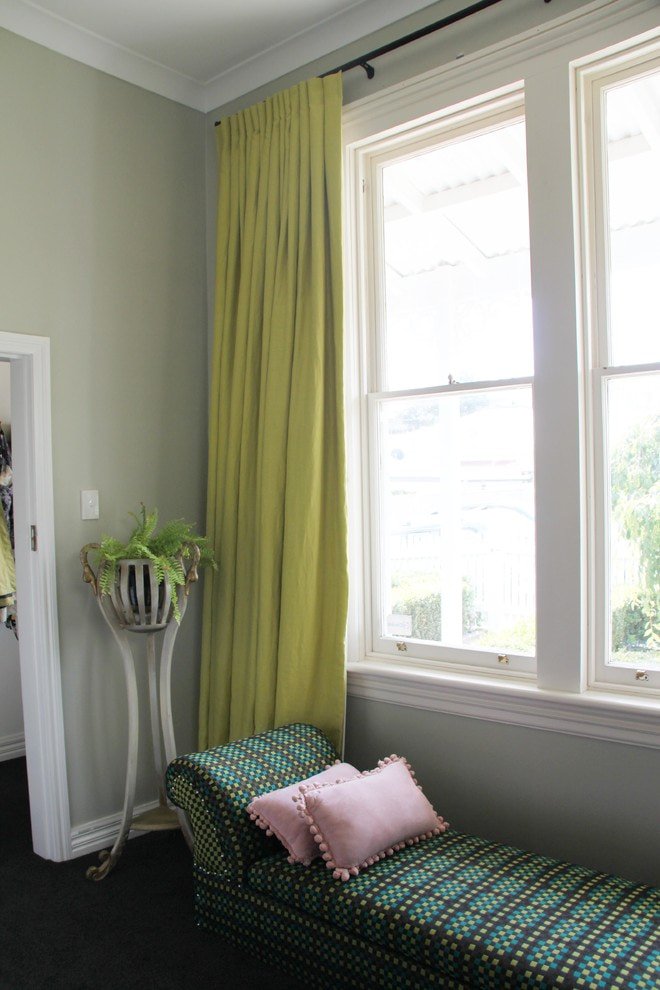
Olive
The color of green olives will decorate a classic interior design. The most successful combination will be with white and cream shades.
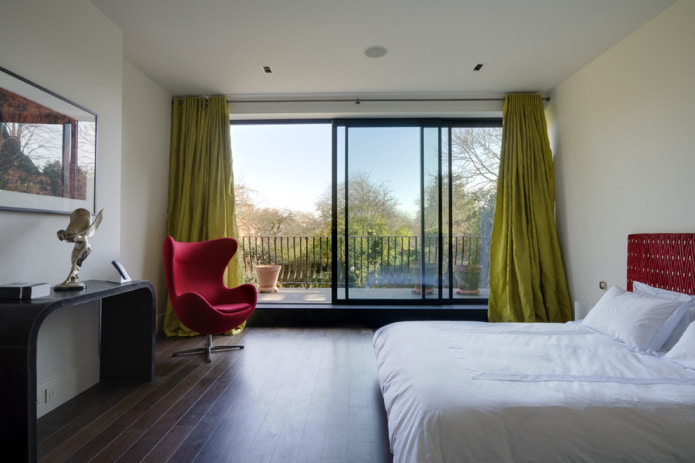
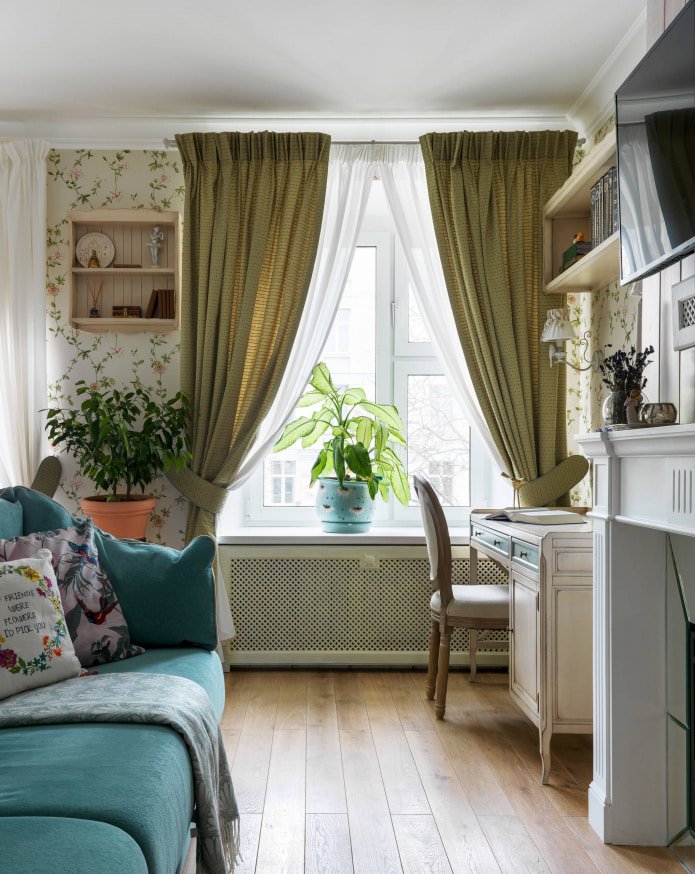

Mint
A fresh cold shade of green will be ideal for Provence and shabby chic styles, it will look gentle, but at the same time fresh.
